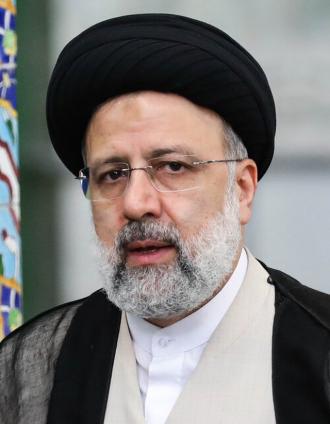During the Mussaf service on Rosh Hashana we recite three sections consisting of verses from the Torah that commemorate respectively, G-d’s Kingship; Remembrance; and Shofar Blasts.
The very second verse extolling G-d’s kingship is a sentiment expressed by one of the greatest all time enemies of our people, Bilaam the Wicked.
לא הביט און ביעקב ולא ראה עמל בישראל ד' אלהיו עמו ותרועת מלך בו (במדבר כג כא)
He gazes at no iniquity among Yaakov and sees no evil schemes in Israel, G-d the Lord is with him, and the affection of the King is in him
Surprisingly not only does G-d never refer to Himself as King, this verse is one of only three verses in the entirety of the Five Books of Moshe that G-d is actually termed מלך, King!
Is there some deeper relevance to the selection of a verse that was uttered by our archenemy that merited finding itself in the liturgy of this very holy day for perpetuity?
The saintly Reb Nosson Nota Shapiro of Krakow, the author of the famed mystical text Megaleh Amukos, who was alleged to have Eliyahu HaNavi visit with him regularly, makes a fascinating assertion.
When Balak requests of Bilaam to assist him in cursing the Jewish nation he states, ועתה לכה נא ארה לי את העם הזה (שם כב ו), So now - please come and curse this people for me...
The Megaleh Amukos claims that this took place on Rosh Hashana. This is cryptically alluded in the word ארה, which serves as an acronym for אלול ראש השנה, the days when the Jewish nation prepare themselves in repentance. The word לי, as well, is comprised of a ל, numerically equal to 30, symbolizing the 30 days of Elul, and a י, equivalent to 10, a reference to the Ten Days of Repentance from Rosh Hashana through Yom Kippur. (מגלה עמוקות מהד"ת פנחס עמוד רפא)
The Mishna in Avos contrasts the character traits of the wicked Bilaam with those of the illustrious Avraham, and their respective disciples. Avraham personified the qualities of a good eye, a humble spirit and a meek soul in counterpoint to Bilaam’s evil eye, arrogant spirit and greedy soul. Clearly Avraham and Bilaam represented polar forces that each sought dominance in the world. It was clearly a battle between the forces of good promoted by the selfless Avraham against the legions of evil lead by the selfish Bilaam.
If the nefarious Bilaam seeks primacy on this most significant date it stands to reason that we should find a counterpart in the life of Avraham that negates this evil attempt to obliterate us.
The Akeidah plays a major role on the day of Rosh Hashana. It is in the merit of that extraordinary act of self-sacrifice that serves as a credit for us on the Day of Judgment, as it is clearly expressed in the Remembrance segment of Mussaf. For this reason it is preferable to utilize a ram’s horn to fulfill the mitzvah of Shofar so as to conjure the memory of this event that concluded with Avraham sacrificing a ram in place of Yitzchok beseeching of G-d that He shall deem it as if Yitzchok was verily slaughtered upon the altar.
The Pesikta Rabbasi indeed asserts that the Akeidah actually occurred on Rosh Hashana.
The accomplishment in this last of the ten tests Avraham had faced, the Akeidah, is what gave validation to all the previous nine.
The Vilna Gaon maintains that just as Avraham had to endure ten tests, where he passed them all with flying colors, similarly Bilaam had to face ten challenges, but failed them all miserably.
So here we have once again these two philosophies pitted diametrically against each other on this most fateful of dates.
In examining these two episodes one will discover some remarkable and glaring parallels.
They both begin their mission ‘saddling’ their own donkeys with zeal. Each of them travel with two ‘young men’. Lastly, Avraham is transported by a male donkey while Bilaam rides a she-ass.
The differences between them weren’t merely evident in their character but stemmed from a very varied world view.
Bilaam professed that man was placed on this planet, perhaps by a benevolent G-d, but left to his own devices. Its a world that functions by the law of the survival of the fittest. Man is driven by an ambition to succeed by conquering the forces of nature and warding off those that may stand in his way ‘in bringing home the bread’ and all the pleasures that man is ‘entitled’ to. Secondly, man has an ego, a sense of self-importance that is gratified when others adore and appreciate his talents and conquests. This, Bilaam maintains is a vital right that man should derive satisfaction in and pursue. Finally, man may indulge in all the pleasures, carnal or otherwise, this wondrous planet offers him and it is in fact an inherent privilege bequeathed to man, that most intelligent of all beasts that sits at the top of the totem pole of nature.
The ‘evil eye’, is that selfish and narrow perspective on life that leads man to blind ambition that tramples all who stand in its path. The ‘arrogant spirit’ prods man’s ego to seek self-worth purely by the number of admirers one possesses and ‘likes’ one earns. The ‘greedy soul’ is the animal soul that pines to quench its lusts unconditionally.
Avraham Avinu sees a benevolent and selfless world where one can achieve exquisite self-perfection by aspiring to emulate the very traits of our Father in Heaven. The greatest satisfaction in life is when man gains mastery over his physical and emotional drives and directs them in serving and assisting the Divine Soul to its greatness. The ‘good eye’ of Avraham sees only positive even in the challenges. The ‘humble spirit’ is never wooed by the temptation of honor or glory, all it needs to satisfies its hunger is a closeness to G-d that is not encumbered by self-interest and personal needs. Finally the ‘meek soul’ understands that although one may take and indeed enjoy the material blessings G-d proffered, but it is never a ‘need’, merely an opportunity to acknowledge and appreciate His kindness.
The saddling is accented in both accounts to compare the nature of the ‘ambitions’ they each pursued, Avraham in the search for the Divine, with Bilaam desperately promoting himself. The ‘young men’ who attended to Avraham were there to be enlightened, whereas by Bilaam were there to cheer him on and stroke his ego that required a constant supply of honor to pump his adrenalin. The donkey of Avraham we are taught is the very same donkey the Moshiach will ride on when heralding the redemption. He is described as riding ‘upon his חמור’, his donkey, which is a metaphor for having mastered his חומר, literally ‘material’ needs. Bilaam is accompanied by his she-ass which we are taught was Bilaam’s ‘mate’, providing him with bestial pleasure and crass indulgence.
The very last test of Bilaam was to determine whether, after being forced to express the truth in bestowing blessing upon his enemy, he would finally ‘get it’. Once again he fails miserably by advising his client to entice the Jewish nation to debauchery knowing how that is their achilles heel. The Moavite women proceed to seduce them but first require of them to worship the idol Baal Peor. This idol was worshipped by defecating in its honor. Perhaps this was Bilaam’s ‘Hail Mary’ moment in his last attempt to portray his demented theology. Bilaam taught his lackeys that man is merely a composite of instincts and drives that are to be nurtured unapologetically. The relieving of one’s natural and uncontrollable body functions was symbolic of man accepting his natural drives as the fire that stokes man’s ambitions.
The Akeidah forever remains the inspiration throughout our long history that we are willing, able and eager to express our utter devotion to the will of G-d even at the expense of life itself. There is a higher ideal, a nobler goal than survival in a material world. There is no greater joy than submitting ourselves to His will knowing that He can always be relied upon to be the loving Father who only wants and does pure good for His children.
We all possess a little piece of Bilaam in our daily lives.
Are our ambitions truly selfless or are we driven to success even when it interferes with our ability to perform and commit to mitzvos the way we really should?
Are we really independent in our choices or are we influenced by what others do or may say? How often do we follow what we truly believe in and not succumb to popular opinion?
There are things we feel we can’t relinquish, and beyond our choice. Comforts, habits and indulgences that we know aren’t healthy, yet we can’t shake them. Are we permitting ourselves to, in a figurative sense, abide by the philosophy and worship of ‘Peor’ by claiming these are uncontrollable needs we simply have to yield to?
Might that be the reason we utilize Bilaam’s very own words so that we should be prodded to ponder how much of our lives are lived tainted by that very same attitude?
The term Akeidah, which literally means to tie together the arms and legs, relates to the fact that Yitzchok requested that his father Avraham bind his hands and feet lest he instinctively flinch at the moment of slaughter.
The call of the Shofar awakens us from our stupor. It must arouse within us a new reality, the affirmation that we can conquer all that G-d sends in our direction. We must bind ourselves if we are to be privileged to be numbered among the disciples of Avraham.
The Zohar describes Rosh Hashana as a ‘day of battle’ where we must take a stand and fight courageously for what we truly believe in. It is the spirit of this epic battle between Avraham and Bilaam that we must display on this momentous day our full and uncompromising loyalty to the legacy of the Avos. Anything less leaves us exposed to the invasive influences from the corrupted and demented world of Bilaam.
As we hear the shofar summoning us let us rally heroically around our flag and gain the final victory.
תקע בשופר גדול לחרותינו - Sound the great shofar for our freedom
בברכת כתיבה וחתימה טובה
ולשנה טובה ומתוקה,
באהבה,
צבי יהודה טייכמאן















